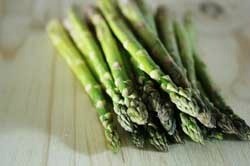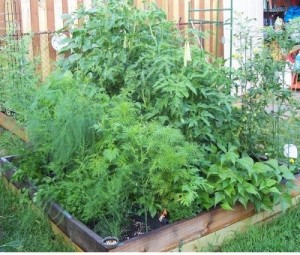 Raised beds pack a lot of growing power into a small space. They provide an excellent growing environment for all types of plants including vegetables, flowers, herbs, and berries, as well as offering gardeners ways to overcome a variety of difficult growing conditions.
Raised beds pack a lot of growing power into a small space. They provide an excellent growing environment for all types of plants including vegetables, flowers, herbs, and berries, as well as offering gardeners ways to overcome a variety of difficult growing conditions.
Easier Maintenance: Raised beds are easier to maintain. When it comes to watering, weeding, and harvesting, plants remain easily accessible from all sides. Design variations can be made to accommodate difficult terrain and suit any landscape theme.
Efficient Use of Resources: Anything added to the soil to support plant growth (e.g. fertilizers, water, soil improvers) are all concentrated within the growing areas so there is no waste. The same is true for the application of sprays and oils used to control insects and disease.
Expanded Growing Space: In a raised bed system, walking paths are created between the beds not between plants. This allows you to dedicate all of the growing space for crops, and allows you to space plants closer together, which maximizes yields.
Fewer Weeds and Pests: Closely spaced plants shade the soil and suppress weeds. The edges of raised garden beds also act as a barrier to invading grasses and weeds and help protect plants from a variety of crawling pests including slugs and snails.
Improved Soil Conditions: Instead of battling poor soil conditions, raised beds can be built over existing sites and filled with nutrient-rich soil.
Lack of Soil Compaction: The soil in raised beds is never walked on so it stays loose and friable.
Rapid Soil Warming: Better drainage in the spring allows the sun to warm the soil faster for earlier planting.
Reduced Physical Strain: Because you work at a higher level, the kneeling and bending that comes with traditional gardening is minimized. Also, for gardeners with limited mobility, raised beds can be custom built to a height and width that accommodates the physical limitations of the individual.
This page contains the following solutions.
I used plastic cat litter buckets in my garden. My small raised bed is not deep or big enough to grow tomatoes. I drilled a few drain holes along the bottom, plus used a circular saw bit and cut a large 4" hole in the middle. I raised the soil depth and allowed the roots to extend out the bottom into the raised bed soil.
Why not make a raised garden in an old bath tub? The reason I ask is that when my hubby and I were at a flea market, they had a very large old bath tub for sale.
Here are the questions asked by community members. Read on to see the answers provided by the ThriftyFun community.

Ruth from Ontario, Canada
Please accept my condolences on the loss of your husband. Personally, I'm a big fan of raised beds for growing both vegetables and flowers. Raised beds are simple to construct and easier (in my opinion) to maintain. You never walk on them, just in between them, and they can be built in all types of shapes and sizes and to whatever height suits you.
Constructing them is straightforward. Start by selecting a suitable site (full sun for vegetables). Try to allow enough space in between each bed (2 to 3 feet) so you have enough room for walking, as well as maneuvering your garden cart or wheelbarrow. Remove the sod from the site by slicing just below the roots using a flat bladed or regular pointed blade shovel. Soak the area with water a few days before digging to make this job easier.
Once the sod and existing weeds are cleared away, dig down at least 18-24 inches into the exposed soil to turn over and loosen it up. This is also a good time to place plastic edging around the perimeter of your beds to keep grass from moving in and taking over. Mix in some fresh topsoil and a bit of compost to bring the soil level up to an few inches below the height of your framing material.
Frame the sides of you beds with cinder blocks, bricks, landscaping timbers or rock. If using commercial landscaping timbers, make sure they are untreated in order to avoid leaching chemicals into your soil. If using railroad ties, avoid new ties, as they contain a lot of creosote. Secure wood framing together with bolts or by pounding metal stakes into the ground on either side of the timbers to hold them in place.
Good luck to you!
Ellen
Here are 3 websites which will answer a lot of your questions.
www.hgtv.com/
www.sinsleystuff.info/
Hi,
Yes, raised beds are better, it's about the water drainage.
Check out http://www.betterhomesandgardens...
you should be able to search for the info from there.
I have had vegetable gardens for years. A few years back my hubby made me two large raised beds, @ 25' long by 5' wide. I love them and wish I had them years ago.
They are easier to water, much,much easier to weed. They seem to have less weeds than a flat garden. Also they a easier on the back when you do have to weed. I use a sponge knee pad when weeding. Plus you have the edge of the bed to lean on or sit on for a rest.
A couple of tips I would give is make sure they are no more than @ 5' wide, you want something that you can reach the middle from both sides. Second make sure they are at least 3' apart so that when you kneel to
weed is enough room for your legs.
I have been growing in raised beds for the last three years. I have grown tomatoes, peppers, butternut squash, lettuce, carrots, kohlrabi, radishes, garlic, onions, and herbs. They all do very well in raised beds.
What I would recommend is a good composted soil to start with. We also lined the insides and bottom with newspaper to inhibit weed growth. Make sure the paper is very wet before you put the soil in.
Hope this helps.
My condolences on losing your husband. Great advice on the raised bed, but you can do them without the sides. We have gardening organically in raised beds for over 25 years and never bother to put up permanent sides. We use a Troybilt rototiller to turn the earth and till in the compost, then just shovel the soil up to about 8" to 10" and plant. I use radishes as a marker between the sections. It's easy to see where you left off planting and have early bonus munchies at the same time. :) Good luck I hope you have great success.
We started building raised beds about 3 years ago and I love them!
Ours are waist high....image weeding with NO bending. We have built them about 14' long and just under 4' wide. We have 7 now and, because we plant our vine vegetables on the perimeter of our property, I think the 7 will be plenty.
I think they are certainly worth the initial effort.
I am building 12 inch high raised beds this year on top of really lousy clay soil. I have heard/read so many different opinions on what to fill the bed with. One recommendation was to not remove the sod, lay landscape fabric, and fill with some rocks for drainage and use NO soil, just compost (2/3) and peat (1/3). Anybody have input on this?
Hardiness Zone: 4b
By Julie Rider from Green Bay, WI
I used compost and cow manure. Make sure the manure is old so it will not burn the plants or seeds. Mix it well . Maryan
When I moved to arizona (a small town close to flagstaff), we had red cinders/rock instead of soil.
I too used a 12 inch raised bed. I filled the bed with a mixture of "jerry baker's barnyard tea." 1 Bag top soil, 1 bag peat, 1 bag sand, 1 bag garden gypsum and 1 bag garden fertilizer. Mix it all up and start filling the bed. You can increase the amount of the mixture by how large a raised bed you are making.
My oh my I am in love with Jerry Baker. My garden was wonderful. Bulbs for spring, other flowers for summer. It was all wonderful. Until one morning I looked out and saw the cattle eating over the fencing i had put around it. In arizona you can fence them out but the ranchers do not have to fence them in. So they range.
But it was wonderful while it lasted. Good luck and google jerry baker, master gardener for any other questions. Worked for me and still does.
Ps: this works for all states and all gardens. We must replace what plants use up each year.
Mix it up and chop it in. You will be a happy gardener.
 Q: Has anyone tried growing asparagus in a raised bed using landscaping timbers? If so, how high and what length and width would be best for the plants? Also, what amount of plants (roots) are needed for two people enjoying a harvest?
Q: Has anyone tried growing asparagus in a raised bed using landscaping timbers? If so, how high and what length and width would be best for the plants? Also, what amount of plants (roots) are needed for two people enjoying a harvest?Hardiness Zone: 7b
Thanks!
KCC from Canton, NC
A: KCC,
Asparagus is a great candidate (as are all veggies) for growing in raised beds. The soil in raised beds warms more quickly in the spring, it is easier to weed and amend and it provides great drainage. I've read about established beds lasting nearly 40 years! Roots can grow fairly large so you want to make sure you leave enough room for developing spears. In raised beds, you can get by spacing crowns 15"-18" apart on all sides at a depth of 6"-8". Depending on how much you like asparagus, anywhere from 20 to 40 plants per person should provide a good amount of asparagus for two people. You can always start with a 4' x 4' bed (12 inches deep) and expand it if your appetite for asparagus grows.
Ellen
I'm currently growing asparagus in a raised bed, this past summer was my first season though which is the establishment season. So I'll see what happen for this summer. My bed area for the asparagus is about 18 inches by 5-6 ft. It is in a larger bed but I have that much area blocked off from the rest so I'll see if it continues to stay separated or the roots try to crawl their way over. The asparagus is on the left side of the whole bed (the feathery looking plants). Since it is the first season I planted celery in between which I bought by mistake, I thought I was getting parsley. So I just stuck it in there as a filler. Of course it didn't grow properly (the celery) but I was able to salvage the leaves which I dried to use in soups. I went a little crazy with plants in this bed because when I get to the nursery I can't control myself.

Check out these photos.
These are the raised beds that my wonderful husband built me. Changed the way I garden forever! That and square foot gardening by Mel Bartholomew!
This is a view of my Northern Alberta garden consisting of raised beds and flowers intermingled.
This is a page about building raised beds. There are a variety of reasons to build raised garden beds, from poor soil to creating a more orderly garden space.